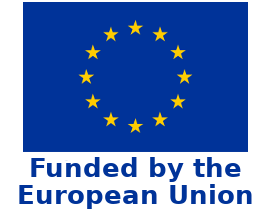The Gender Impact of COVID-19: Implications, Vulnerabilities, and Countermeasures.

THE GENDER IMPACT OF COVID-19: CONSEQUENCES, VULNERABILITIES AND COUNTERMEASURES
The consequences of the spread of COVID-19 affect women and men differently:
Counteraction. Women play an important role in counteracting the spread of the infection – as frontline health workers, scientists, homemakers, volunteers and community mobilizers. In Ukraine, for example, women make up 82% of all health care workers. Most primary care providers are women, but the gender wage gap (12% in 2018) can grow in times of crisis. Female health care workers also have specific needs, which, in addition to the need for personal protective equipment, include child care and providing for basic family needs.
Caring. Globally, women perform three times as much unpaid care work as men. For example, the results of a study in Ukraine [1] showed that 77% of respondents believe that caring for others is the most important role of women. When health care systems are overburdened, much of the care is done at home, and caring for sick family members also increases the risks of infection for women. School closures further increase the burden on women who must take on additional caregiving responsibilities.
Economic opportunities. Women are more likely to be adversely affected economically by the outbreak because women’s employment is concentrated in low-wage sectors and lower-level jobs; many women work in the informal sector, without health insurance or social protection. Compared to men, women are more vulnerable to layoffs in times of crisis, due to employer bias. As a result, women face increased risks of poverty, which will affect the well-being of their households.
Access to services. Disruptions in public institutions and restrictions on citizen mobility can hinder women’s access to basic public services on which their families depend, including social support and basic health care. There is evidence of the gender dimension of contemporary poverty profiles (elderly women, single parents, raising children), so any delays in social payments disproportionately affect women. In turn, due to overburdening, health care systems are often forced to divert resources provided for specific services for women, such as reproductive health and family planning services.
Increased risks of domestic and gender-based violence. Numerous studies show that the prevalence of domestic and gender-based violence increases when households are under stress. At the same time, victims’ access to justice and social services may be restricted, and crisis centers are closed for quarantine periods.
Vulnerable groups of women. The negative impact of the COVID 2019 outbreak is amplified for vulnerable groups of women, including women with disabilities, women living with HIV, older women, rural women, and others. Through restrictive measures, they may not have regular access to the specific services necessary to meet their needs. In particular, women living with HIV may lack access to life-saving treatment due to overburdened medical systems. Vulnerable populations may also face a lack of adequate communication and information on the rollout of the epidemic, available services and prevention tools.
Recommendations for a gender-sensitive COVID-19 response:
Ensure the availability of sex-disaggregated data regarding incidence rates, economic impact of the epidemic, caregiver burden, and prevalence of domestic and sexual violence,
Prioritize support for women who work on the “front lines” of health care, ensuring they have better access to “women-friendly” personal protective equipment, promoting flexible work schedules and support for childcare,
Ensure that women’s voices are equally heard in crisis-related decision-making, develop gender expertise in response teams, and ensure that gender analysis informs national response plans, using evidence disaggregated by sex, age, disability, pregnancy status, and in consultation with women’s groups and organizations,
Ensure public health messages are appropriately targeted at women, facilitated by women’s organizations and gender experts; ensure information materials do not reproduce gender and other stereotypes; ensure information reaches the most remote communities; and use a variety of information channels for people with different needs





